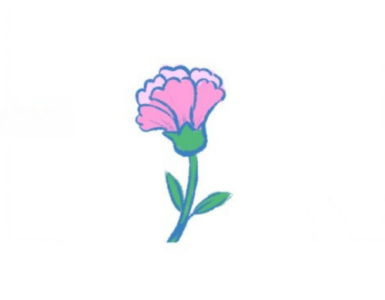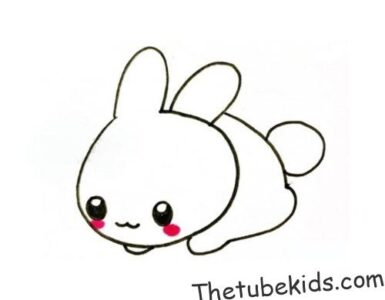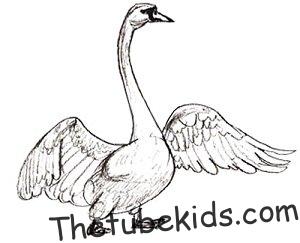The article will begin by discussing the benefits of drawing poses. Poses can help children to develop their observational skills, their understanding of anatomy, and their creativity. They can also help children to express themselves and their emotions through their art.
The article will then provide tips on how to teach children to draw poses. We will discuss the importance of using reference materials, breaking down poses into simple shapes, and practicing regularly.
Finally, the article will provide a link to a video tutorial on how to draw different animal poses. This tutorial will provide a visual demonstration of the techniques discussed in the article.
What is Pose?
Pose is a simplified representation of an object’s skeleton. It defines the shape, position, and perspective of the body. Every animal has a pose, even if it hasn’t been planned and drawn in a stylized manner before. Understanding poses helps you draw a greater variety of animals.
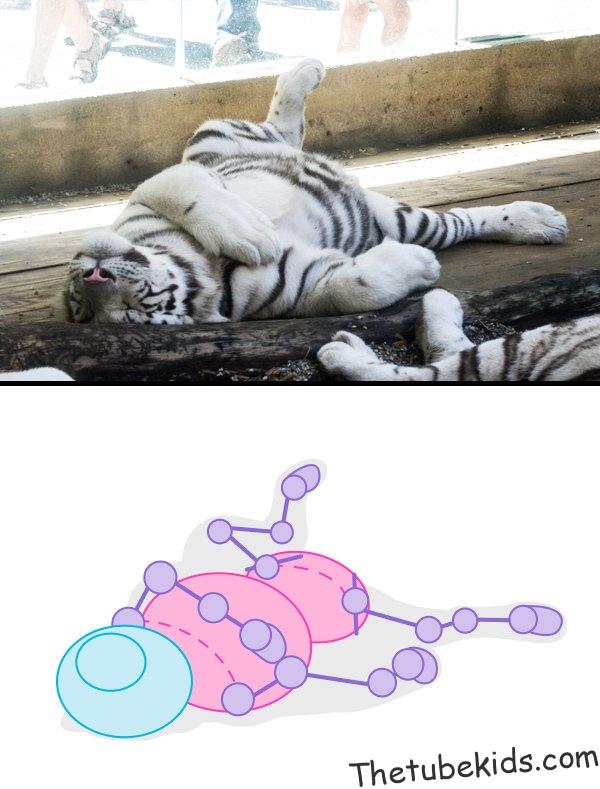
Pose represents the skeleton, so it has ‘joints’ and ‘bones’ and merges certain parts for ease of representation. There isn’t one, only one correct pose drawing—it just needs to represent the skeleton, but the style of the drawing is unrestricted. When designing a pose, I tend to sketch out basic muscle masses.
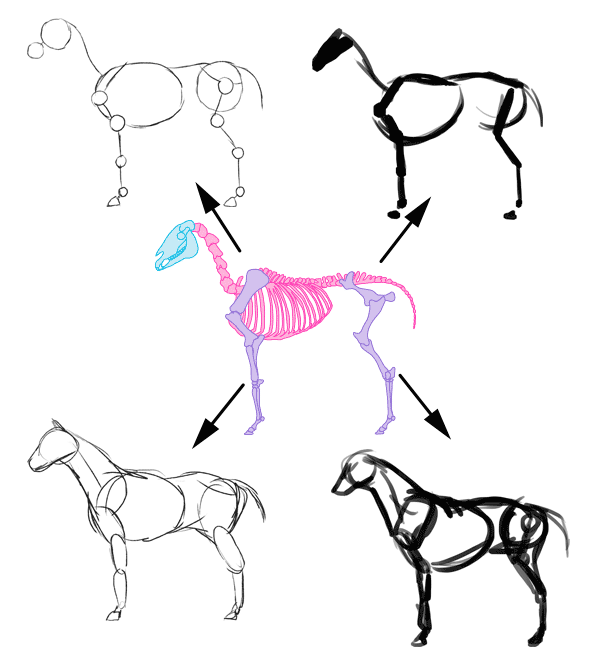
Why is this so important?
Pose is the first element of anatomy. When you start drawing without defining the pose first, it’s like building the body solely with muscles, which is incorrect; pose is equivalent to the structural pivot.
At times, a picture may look exquisite, with carefully rendered fur, textured details, and sparkling eyes, full of life. On the other hand, a hasty sketch composed of messy lines may appear very realistic. There might be some issues contributing to this effect, but undoubtedly, pose plays a crucial role.
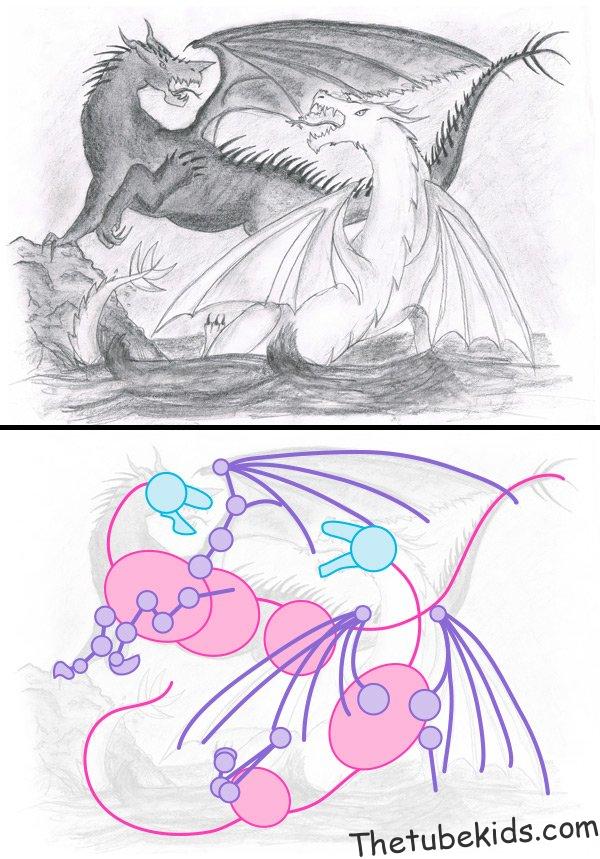
Oops! I’m sure I didn’t plan for that.
Composition of Pose Structure
Although our blueprints are always presented in 2D form, it’s best to think of the shapes composing the pose as 3D objects. This makes them more easily ‘rotate’ in our minds and also makes constructing the pose according to the rules of perspective exceptionally easy.
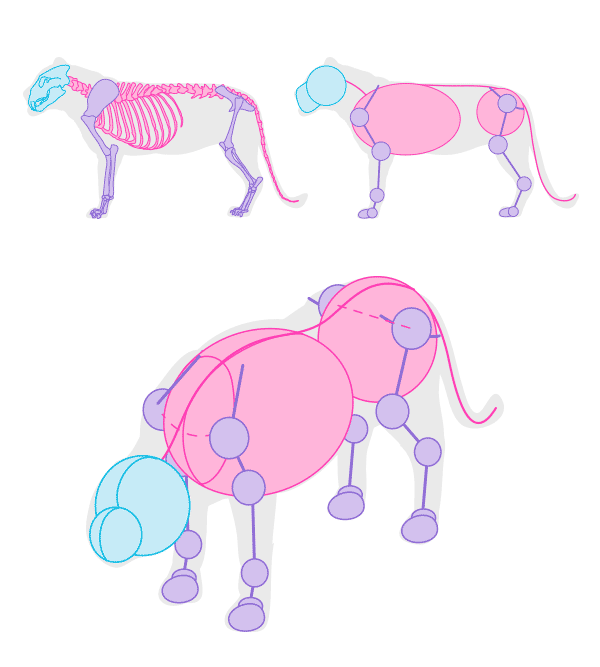
Chest
The chest in the skeleton is made up of ribs. If the animal is healthy and well-nourished, there’s no need to draw them; just draw the shape they create—a balloon-like form. It represents the largest mass within the animal, akin to the front of a wheelbarrow. At the top, there’s a shoulder strap—an oval formed by the clavicle line and shoulder cap bone line. Even if the animal doesn’t have functional clavicles (like a cat), it’s still a good idea to draw an oval to find a fixed point for the front leg.
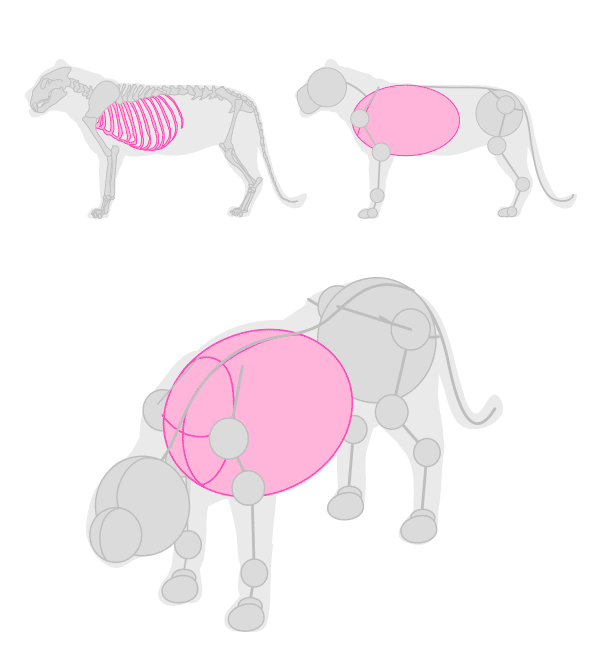
Hip
The hips are a complex skeletal structure that looks entirely different from various angles. Fortunately, they are situated inside the body, and we only need to draw their function rather than their form. They shape the back of the wheelbarrow, keeping the legs in place and defining the default position of the tail. They can be drawn as balls with three lines (only to define the space they occupy) – one for width and two for the sides.
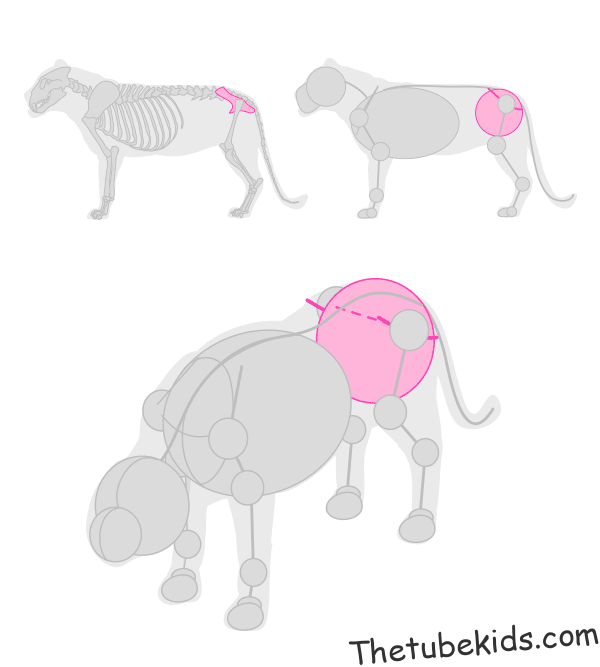
Bones
Technically, everything in the skeleton is bones, but by this method, we’ll narrow the definition down to only long and straight bones. They are drawn as simple lines connecting joints. Their radius is not crucial, but pay attention to the length.
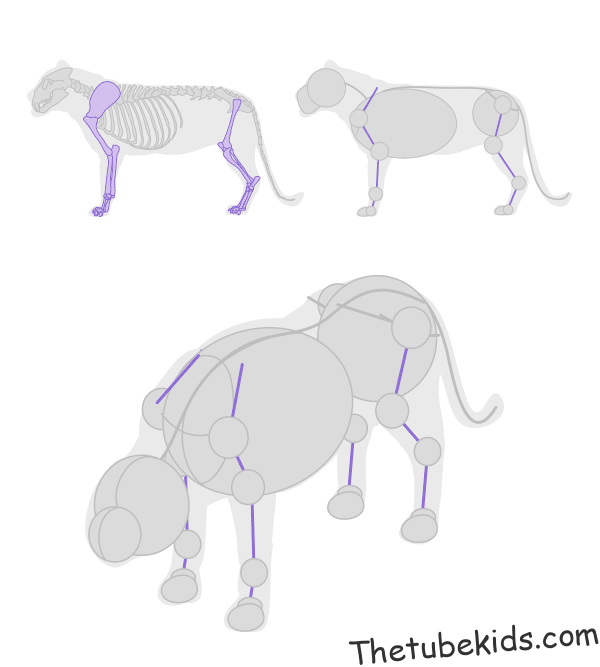
Joints
Joints are where two bones meet. Thanks to them, the skeleton can move relatively within a limited range. In a pose, joints can be drawn as simple spheres—they define the positions where bones can change direction.
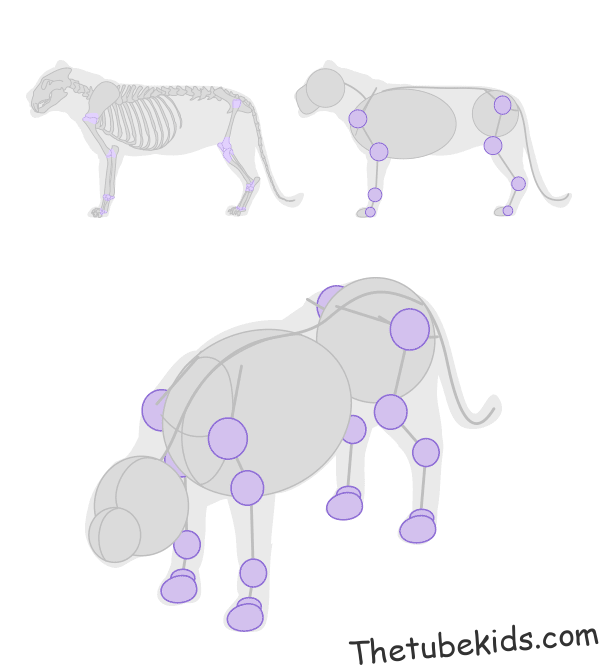
Spine
The spine is composed of small bony segments, like a row of short bones and joints. It can be drawn as a line connecting the head, chest, and hips. From the hips downward, the tail is simply another part of the spine.
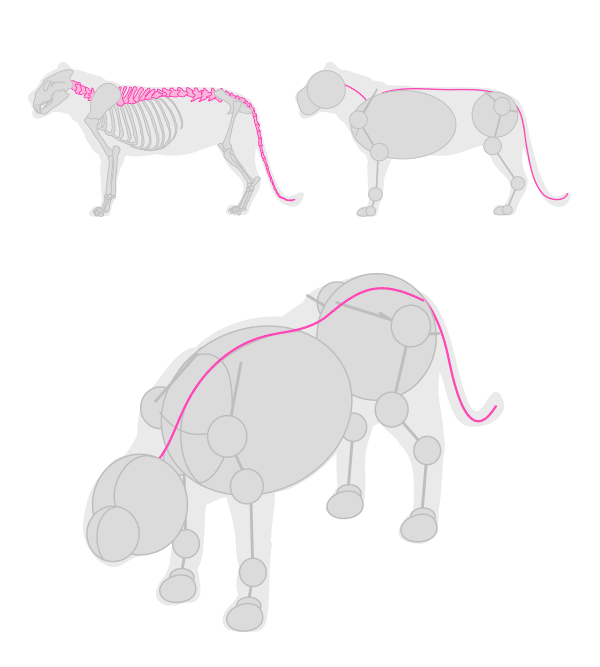
Skull
The skull is the most distinct element in an animal, so when drawing a pose, a placeholder can be created for it.
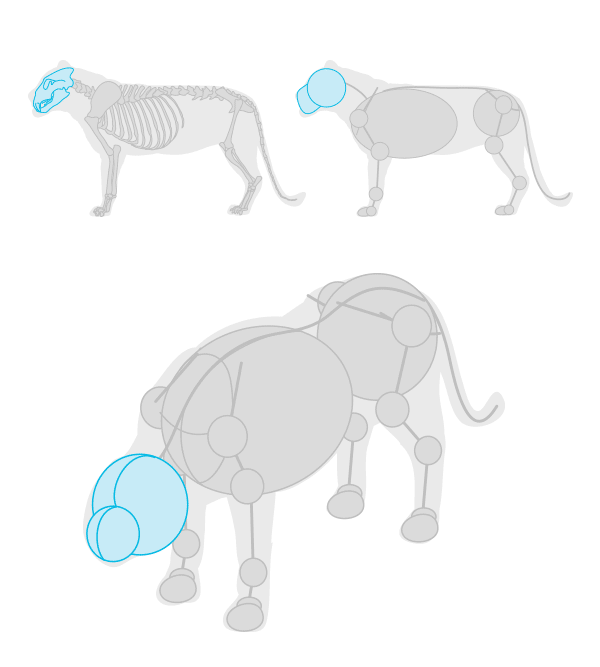
Universal Skeleton
While the body shapes of every animal vary (with smaller differences within families), most vertebrates adopt a similar pose. This means you can learn some universal rules and correctly draw most popular animals! – Basic Painting Instructions
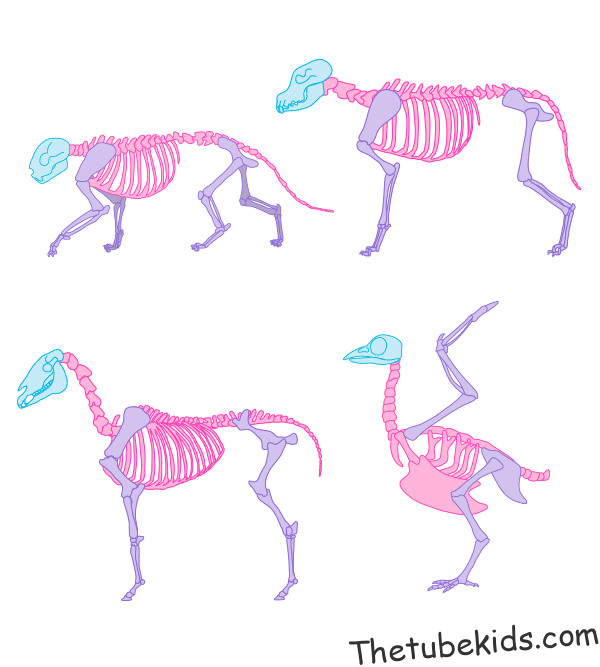
Let’s take a look at the universal skeleton you need to understand.
Limbs
Although animals can have four legs, they are not exactly the same. The elbows of the front limbs (similar to human arms) bend backward, while the knees of the hind limbs (similar to human legs) bend forward (keep in mind that the main joints of each limb bend toward the center of the animal’s body). They are all composed of three parts:
- Upper arm/thigh;
- Forearm/calf;
- Hand/foot.
Since some animals have appendages like tentacles, these can be considered as a fourth part. Once you know this, you can easily relate the body of any animal to your own and use yourself as a reference when it comes to joint movement ranges.
Pay special attention to constraints. The range of motion of joints is limited – disconnect them, and one will notice issues in the image. Just as you cannot rotate your arm in one position, animals cannot stretch their legs in various directions without tilting their chest.
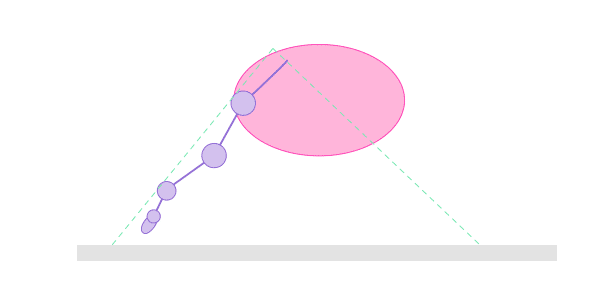
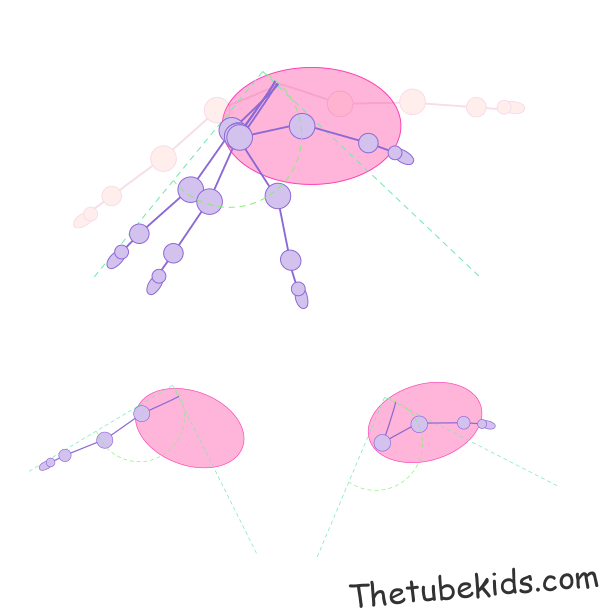
When creating dynamic poses, a common challenge is getting the proper lengths for all three parts of a limb. There’s a simple trick that can assist you in a second! All you need to do is understand the direction the paw or foot is pointing towards the limb. As you move the hand, the arm follows it. When walking, place the foot on the ground, and all the legs follow its movement.
The trick is:
- Determine the maximum length of the limb and the ratio between the arm/forearm or thigh/calf;
- Draw the paw or foot at any position within its range;
- Divide the space between the paw or foot and the body according to the ratio you’ve set before;
- Draw the other parts of the limb using the default length. The farther it is, the greater the angle between the arm/forearm.
This simple technique can quickly provide assistance in getting the right proportions for the limb parts.
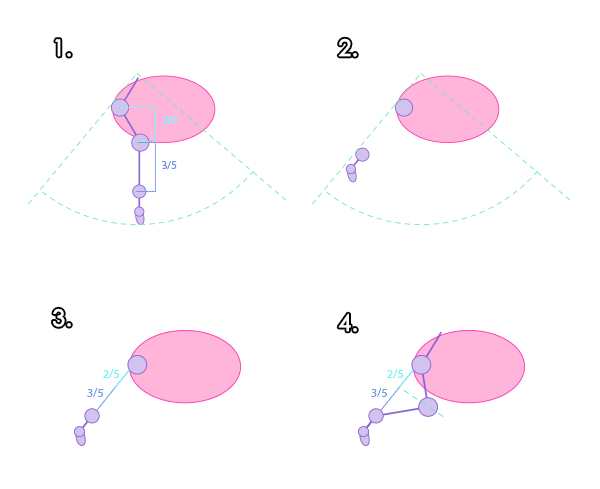
From Head to Tail
The spine creates a common line for the outline. It is embedded in the skull (at the back for quadrupeds, at the bottom for humans), then passes between the shoulder cap bones, goes through the hips, and terminates at the end of the tail. The flexibility may vary for specific animals, but generally, you can use your own spine as a reference.
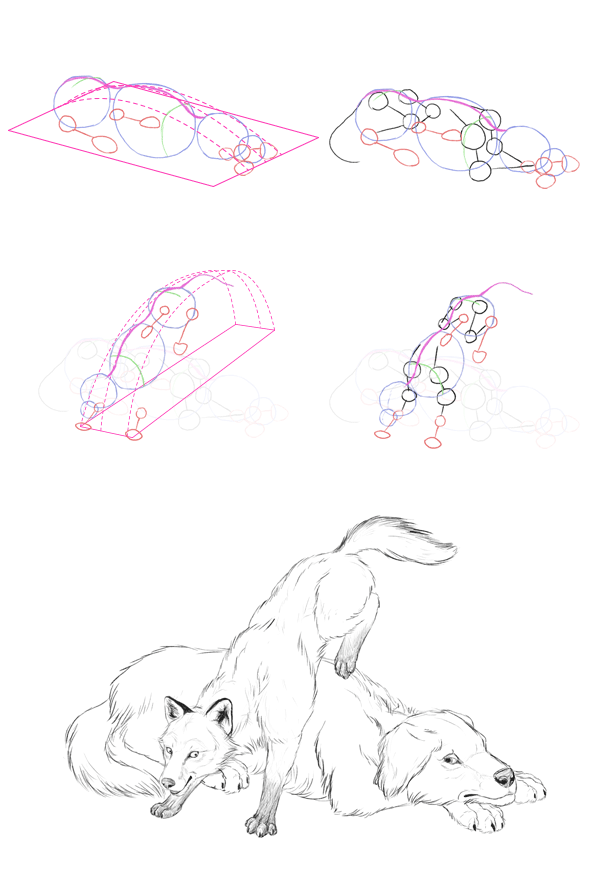
Common Pose Tips
Lying Down
The main challenge when drawing animals lying down is that some limbs are only partially visible. How to get the proper length for each part? Where should the partially covered limbs actually be?
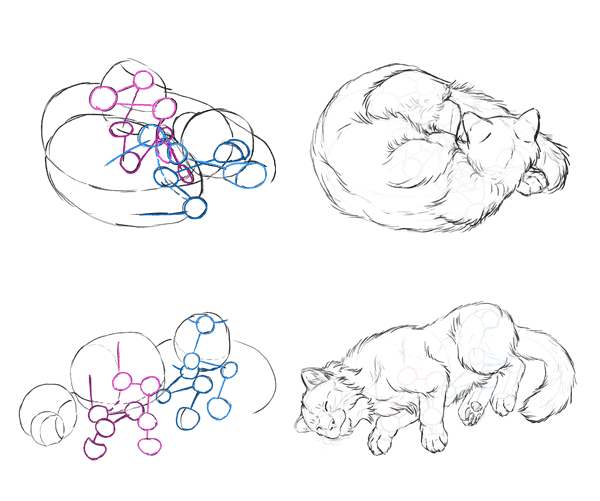
Sitting
Drawing animals in a sitting position is not difficult once you know how to draw the hips. You just need to place them with their feet on the ground, and the rest can be sketched using the techniques from the previous step.
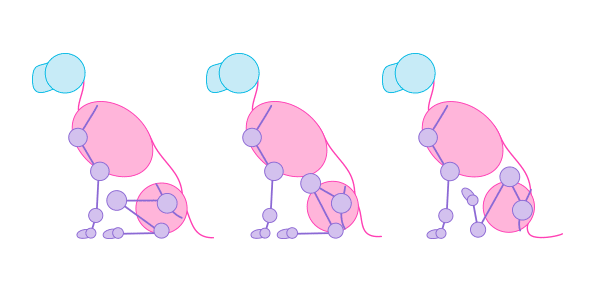
Jumping and Running
In the previous tutorials, I have extensively covered cats and horses, so I recommend checking them out. I can only add that you can still use body checks to see if the pose you want to draw feels comfortable. If it does, go for it – it’s likely to work.
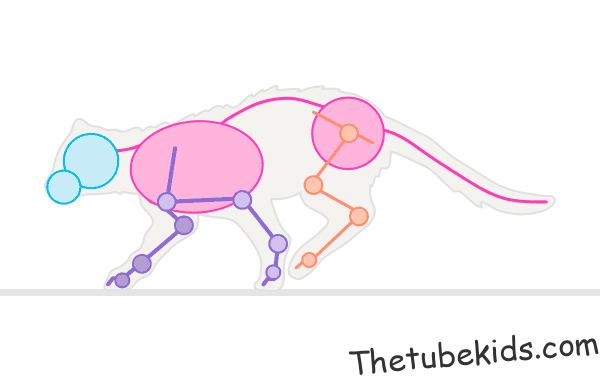
We hope that this article will help you to teach children the importance of drawing poses. With a little practice, your children will be able to create realistic and expressive animal drawings.
Thetubekids.com – “How to Draw Animals: The Importance of Drawing Poses” is your comprehensive guide to honing your skills and expressing the captivating essence of the animal kingdom through your art. Join us on this transformative adventure into the heart of animal illustration and watch as your drawings come to life with newfound vibrancy and authenticity.

